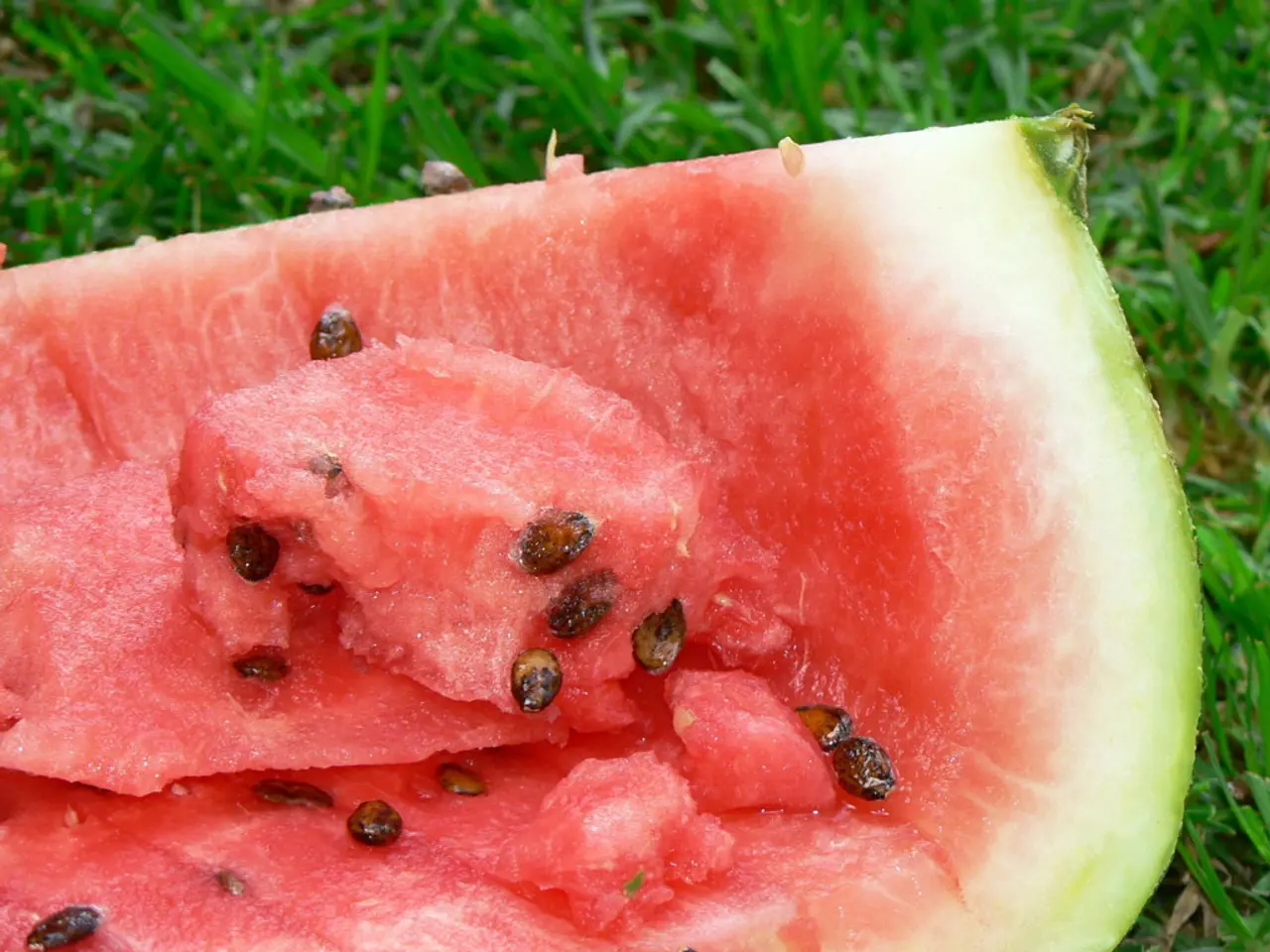Techniques to Cultivate Watermelons for a Delicious Harvest Throughout the Summer Season
Watermelons, with their juicy and refreshing fruit, are a popular summer staple. Here's a guide to help you grow these delicious fruits in your garden.
Light
Watermelons thrive in full sun, requiring at least 8 to 10 hours of direct sunlight daily to mature fruit properly.
Water
Provide consistent moisture, ideally about 1 to 2 inches of water per week. Water deeply at the base of the plant to help roots absorb water and reduce leaf diseases. During fruit development, moderate watering is important; reduce watering and withhold entirely two weeks before harvest to avoid diluting fruit sweetness.
Temperature
Watermelons need warm conditions, thriving best at daytime temperatures above 80°F (27°C) and nighttime temperatures above 70°F (21°C). They are frost-sensitive and require a long, warm growing season of 80-100 days without frost.
Humidity
High humidity can encourage fungal diseases like powdery mildew. To minimize this, avoid overcrowding plants to promote good air circulation and water at the soil line rather than overhead.
Soil
Use well-draining soil that is rich in organic matter. Amendments like compost or melon pits improve plant growth, but watermelons are heavy feeders and will need additional fertilization.
Fertilizer
Feed watermelons regularly during growth—about once every six weeks with granular fertilizer or every two weeks with liquid fertilizer, following product instructions carefully.
Common Problems, Pests, and Diseases
- Pests: Aphids, squash bugs, and cucumber beetles can harm plants and spread diseases. Use row covers to protect seedlings and organic treatments such as neem oil or insecticidal soap to control pests while encouraging beneficial insects like ladybugs.
- Diseases: Powdery mildew is common in humid conditions. Prevent it by proper spacing, watering at the soil line, removing infected leaves, and consider weekly milk spray applications (40% milk mixed with 60% water) for prevention.
- Management Practices: Crop rotation helps prevent pest buildup. Remove diseased foliage promptly to maintain plant health.
Planting
Watermelon is an annual plant that is a ground-level vining plant. Start seeds indoors a month or so before the last spring frost. Watermelon vines need elbow room, with hills about 6 feet (2 m) apart and 9 feet (3 m) between rows.
Miscellaneous
- Deer are attracted to watermelon foliage and can potentially ruin a crop.
- The ideal way to water watermelons is drip irrigation.
- The botanical name of watermelon is Citrullus lanatus.
- Watermelon requires full direct sun.
- Watermelon prefers warm air and warm soil, with potential issues from excess humidity.
- Watermelon prefers well-draining soil.
With these care practices, you can grow healthy watermelon plants and enjoy the sweet fruits of your labour. Happy gardening!
Enjoy a home-improvement project in your home-and-garden by growing watermelons, a popular summer staple. To cultivate these plants, consider their specific lifestyle requirements, such as full sun, well-draining soil, and warm temperatures. By providing consistent moisture, using fertilizers, and practicing crop rotation, you can promote healthy growth and reap the rewards of a bountiful harvest in your garden.




